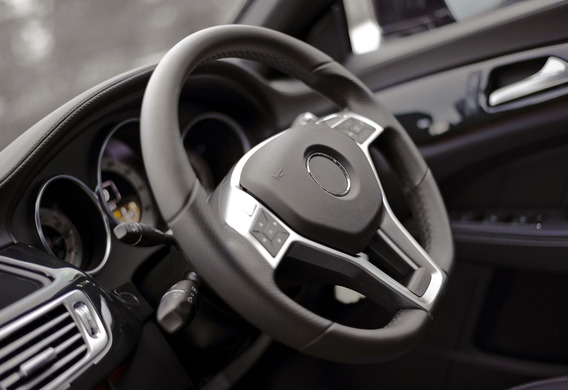
The emergency steering system is a computer system of active safety, evaluating the situation on the basis of sensor readings and corrective actions taken during the execution of maneuvers in an extreme situation.
The need for an electronic system capable of carrying out the actions necessary to save the driver of an activity with no speed is due to the frequent occurrence of situations in which the brake system is too late to be used to prevent a collision, in view of the fact that the stopping distance is known to exceed the distance to the target that the vehicle may encounter. The only way out of these situations is to manoeuvre in order to overcome the obstacle.
There are two important conditions to be met in the event of a maneuver in an emergency: to return the wheels to a corner sufficient for the detour and to prevent the car from rollover. The reaction of a person to danger is unpredictable, and the microprocessor is capable of maximum expediency, taking into account the distance to the object and speed of the movement, calculate the necessary trajectory and help the driver perform a safe maneuver.
Emergency steering in a pre-computer era
The concept of "emergency management system" was used before the advent of computer systems to help the driver control the movement of the vehicle. Similar systems have been used and continue to be used in heavy-duty, predominantly, career self-service vehicles, which often have to climb up and down. For example, the system of the emergency steering equipment is equipped with trucks of the Belarusian "BED" Belarusian plant.
The loss of control in the truck is not allowed, so the hydraulic transmission of the BALasza provides an additional outline with a hydraulic pump, which is included in the case of depressurization of the main steering system.
This system is complementary and direct to the modern ESA.
Emergency steering as part of an active safety system
Modern vehicles are increasingly using different active safety systems. In view of the tightening of vehicle regulations in a number of countries, the use of these systems is gradually taking the form of a legal norm, at the same time prohibiting the use on public roads of at least the basic systems of this category, such as ABS. However, the vast majority of systems of this kind, such as ESP, are engaged in the longitudinal direction of the vehicle. In the case where the driver is required to conduct a series of manoeuvres in the longitudinal direction, or, in simple language, to deviate from the course in order to avoid a collision, the ESP actions may not only be useless, but also openly harmful.
In this regard, emergency steering systems have been introduced to ensure that the driver's manoeuvring manoeuvres are corrected. The most famous Emergency Steer Assist or ESA is currently being tested by Continental.
Principle of the operation of the emergency steering
The system monitors the objects in front of the car on the road by means of adaptive cruise control radars by checking the signals from the surveillance camera that may be part of the adaptive main lighting.
In case of detection in dangerous proximity of the facility, the system uses the exchange control system to achieve maximum wheel chaining. The optimal stability is a necessary parameter, as the car will be influenced by different forces, which may lead to oversteer or oversteer. If the vehicle is equipped with an active suspension or electrically controlled shock absorbers, ESA can activate them by moving the mode to the most appropriate mode.
The decision on further action should be taken by the driver himself. The system cannot be taken over. Its task is to prepare for maneuver, make the car maximum stability and calculate the optimum trajectory. If the driver decides to manoeuvre, ESA may adjust the angle of turn, but shall in no case attempt to influence the steering wheel "against" its actions.
The system is currently in the process of testing and installing it on serial models will start only after full debugging. However, subsystems working on a similar principle-that is, assisting the driver in dealing with the management of extreme situations (unintentionally off-trajectory) are used in the system of control of the width, such as Lane Keep, which is equipped with Lexus Premium sedans.









